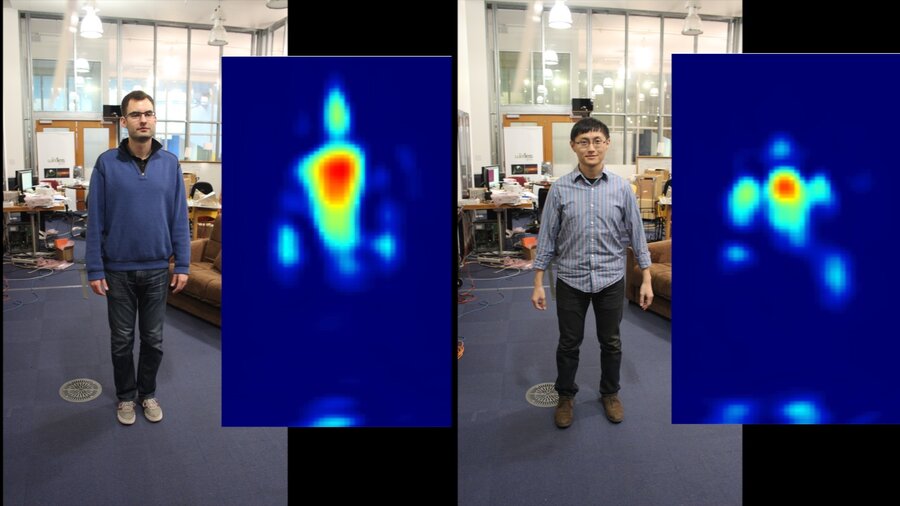Good news or bad? MIT can track people through walls
Loading...
In one of those "reality is weirder than science fiction" moments, new technology developed at the Massachusetts Institute of Technology (MIT) uses wireless signals to detect people and their movements through walls. It can even tell people apart.
The innovative aspect of the technology is that operates through walls and without requiring the people being detected to wear any special sensor equipment, say the scientists who developed the technology, called RF-Capture.
They emphasize that, although this capability inevitably raises privacy concerns around the potential for more intrusive surveillance, it also has benign applications in gaming, elder care, and smarter home appliances.
"In the same way that cell phones and Wi-Fi routers have become indispensable parts of today's households, wireless technologies like this will help power the homes of the future," said Dina Katabi, a professor of electrical engineering and computer science at MIT, to the International Business Times.
RF-Capture works by sending low-power radio frequency signals – 1/1000th the power of Wi-Fi – through a wall. They reflect off the human body and bounce back to the device for interpretation.
As a person moves, different parts of the body reflect the signals to the device, which captures each move in 3D snapshots of various moments in time, the researchers explain in a paper published Wednesday on the lab's website.
It then stitches them together and presents a complete human figure in what looks like a heat sensor map, with the head, chest, arms and feet brightly colored against the blue background.
What’s more, RF-Capture can tell five to 15 people apart with near-perfect accuracy by their unique silhouettes, and it can recognize different postures.
For video game buffs, this could mean more motion sensitive gaming consoles, like the Xbox Kinect, the engineers say, or more efficient kitchen appliances that recognize people’s identities and turn on and off based on their gestures.
MIT scientists also see great potential for RF-Capture in the healthcare field. MIT has already developed a version of the technology, called Emerald, for elder care. It allows families to track their elderly parents remotely.
"We are very excited about future research along two fronts: first, getting finer resolution to recover the silhouette with higher accuracy, and second, we would like to gain deeper understanding on the health front," Prof. Katabi told Gizmodo.
"We can [already] use RF-Capture to extract a person’s breathing and heart rate," she said. "Can we detect heart problems using this wireless technology? We believe the answer is yes."
Katabi acknowledges the privacy threats inherent in this type of technology. She told Gizmodo that the team is designing blockers that prevent devices other than people’s own to track them.
"We need to have regulations that dictate how and when these devices can be used," Katabi said. "We [also] want to ensure that people do not use it for malicious purposes."





